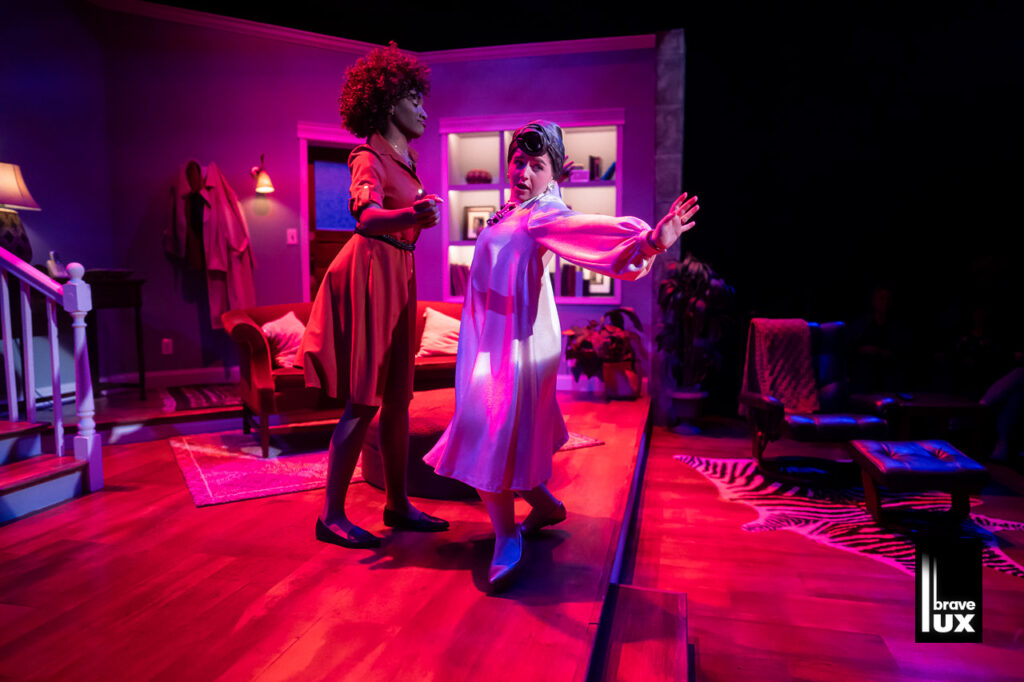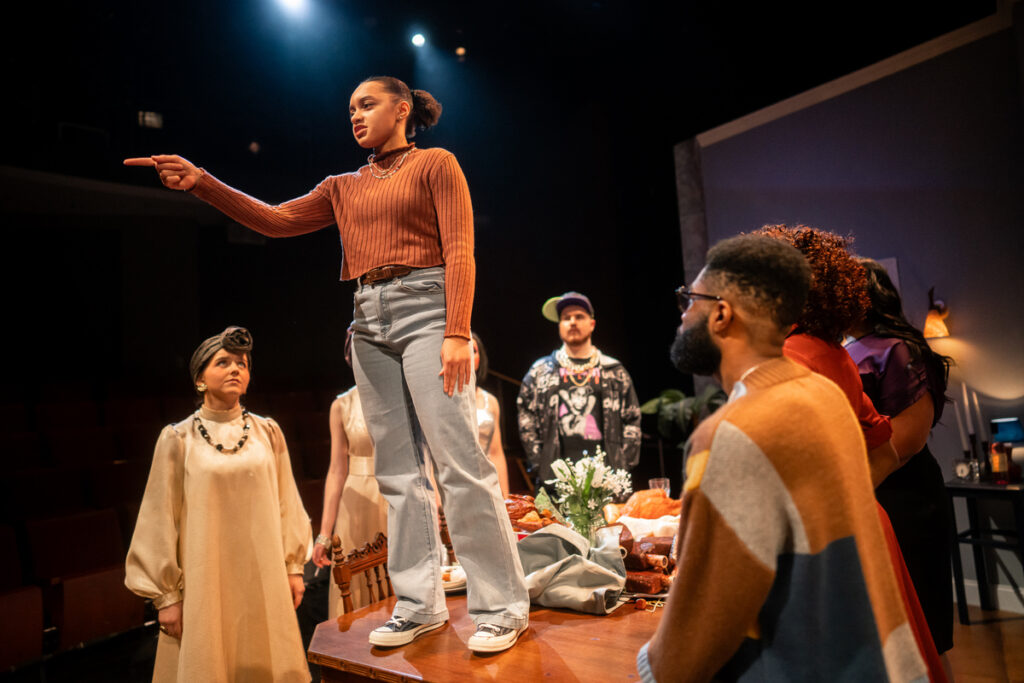“Fairview” is a poignant and correctly targeted mediation on the violence of the white gaze on Black Americans.
‘Fairview’ Dissects The White Gaze In Media
In the final monologue of Jackie Sibblies Drury’s “Fairview,” the character Keisha, played by first-year Trinity Bryant, calls all of the white members up on stage, to see what it feels like to be watched, for once.
To be watched specifically in the way that Black people are incessantly watched, monitored and observed under the racist microscope of the white gaze.
Directed by Dr. DeRon S. Williams, a professor of theater at Loyola, “Fairview” follows the Frasier family consisting of Beverly, played by fourth-year Judi Nwonye, Dayton, played by third-year Justin Turner, Jasmine, played by fourth-year Courtney Lewis, and Keisha as they prepare for Mama Frasier’s birthday dinner.
Their celebration, fraught with stress and the unraveling of the typical sitcom family presented in an opening scene, is interrupted by a troupe of white characters who have been watching the show proceed from the rafters, intent on adopting what they believe to be the Black experience and mimicking it.

These characters spend the whole second act looming over both the stage and the audience, creating the illusion that all are being watched. The Fraiser family is silent on stage, miming the exact dialogue of the first act, with the four literally speaking over them.
This is Bryant’s first brush with acting in a play, according to the program — though her impassioned performance would suggest otherwise. In her role as Keisha, Bryant’s command of the stage, alongside thoughtful line delivery, present the certainty and confidence of a seasoned actor.
Nwonye delivers another standout performance in the role of Beverly. “Fairview” marks her return to the stage following a hiatus, according to the program, and shows no signs of rust. Nwonye is effervescent on stage, perfectly encapsulating the sitcom normalcy the opening act depicts and that normalcy’s eventual destruction under the white gaze.

Phoebe Ludwig, who shined in “Life is Cabaret” earlier this academic year, continues to shimmer — albeit violently — as Suze.
The four white characters represent the four major ways in which white people engage in day-to-day racism. Suze is the liberal white savior. Mack is a gay man who believes he has an inner Black woman. Jimbo believes rap encompasses the entirety of the Black male experience. The European Bets believes Americans care too much about race without being able to recognize the extremely prevalent racism in their own country.
In the final act, these characters make their onstage appearance, acting out the vicious stereotypes they have towards Black people. Their performances demonstrate a punching intentionality — they’re brash and abrasive in their racist depiction of these stereotypes, as the play intends.
This is not — as some members of the audience seemed to interpret it — a moment played for laughs. The chorus of laughter that rang out while this overt minstrelsy was playing out on stage was shocking, almost frightening.
The play is a staunch call for white audience members to consider their participation in the perpetual harms of the white gaze. The rampant appropriation of the Black experience and Black culture by white people should be central to this conversation, as exemplified by the play’s final act.
Featured image courtesy of Joe Mazza
-

Audrey Hogan is a third-year student from Morgan Hill, California studying Communications and Political Science. This is her third-year as a writer and second-year on staff as Engagement Editor. She's written about the perils of academic pedigree, table tennis and Peter Gabriel, too. In her free time, she likes to read and walk.
View all posts
Topics
Get the Loyola Phoenix newsletter straight to your inbox!


